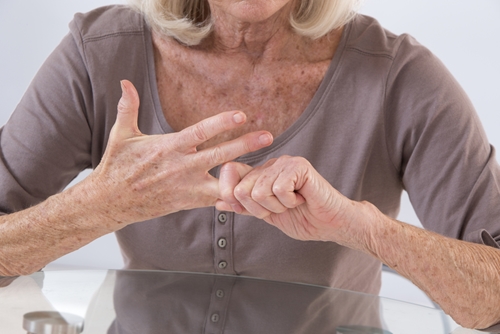
How does cold weather affect arthritis and what can you do to alleviate pain and discomfort?
It's long been an old wives tail that aching bones and joints are a sign of changing weather. And indeed, many individuals living with rheumatoid arthritis and other ailments report increased pain during the colder parts of the year. Recent scientific research is beginning to shine light on the connection, and understanding if and how weather may affect bodily pain, – findings which can help doctors and patients prepare. Here's what you need to know about the connection between colder temperatures and arthritis.
A timeless belief
Professor of medicine and division chief of Rheumatology and clinical immunology at the University of Vermont College of Medicine, Dr. Bonita Libman, told Everyday Health that many people claim that symptoms are indeed more common or intense during autumn and winter. This is ultimately a subjective report, however, despite how common and pervasive this problem may be.
That being said, there is evidence that lower air pressure – which is often associated with colder weather – may cause more aches or pain in the limbs and extremities. Libman stated that scientific evidence may be sparse, but there are still findings that underscore this commonly held belief.

Scientific evidence
Though it has been difficult to pinpoint if colder weather directly impacts arthritis and other conditions, scientists have been able to uncover telling correlations between the two. Researchers from the Department of Internal Medicine at the Reading Health System in Massachusetts reported that the highest rates of hospitalization due to arthritis occurred in autumn. Of 28.172 incidents across three years, November saw the greatest number of hospitalizations, while spring was linked with the lowest rates.
A team of Dutch scientists in Amsterdam, meanwhile, found a strong correlation between humidity and pain caused by arthritis. This connection was strongest in colder weather, and although the authors of the study concluded changes in daily weather may not affect individuals living with arthritis, they suggested that these findings do confirm a relationship between temperature and some types of bodily pain.
What can be done?
Individuals living with arthritis may not be interested in scientific vindication, and already be keen to the affects weather can play in pain or discomfort. For that reason, solutions that can limit or prevent these issues are in high demand in colder months.
Staying well-hydrated is a good place to start. Mild dehydration can make the body more sensitive to pain and make it difficult to regulate temperature. Water can also play an important role in mitigating pain related to arthritis, as a warm bath or hot water bottle can be used to alleviate pressure and discomfort.
What you wear is another important consideration. Dressing in layers can help you enjoy outdoor activities without worrying about over-heating or being exposed to the elements. Long underwear, thermal t-shirts and other items can keep your knees and elbows protected from the cold while granting you the freedom to cool off if the sun comes out or when exercising. IMAK Compression gloves are great for keeping the hands warm and reducing the risk of discomfort or numbness caused by low temperatures.
"Staying active is a way to keep joints moving."
Massages and other activities can be used to work through pain, but these may be expensive or inconvenient to fit into a busy schedule. Vibration therapy can offer the same benefits. Gloves, braces and other items gently work to increase blood circulation while also warming aching joints. These items can be worn discretely and provide lasting relief throughout the day.
Whether or not cold weather has a direct affect on arthritic pain and other ailments, autumn and winter can cause many people to exercise less frequently. Staying active is a way to keep joints moving and well lubricated, and those living with any discomfort should look for ways to get physical in the colder months of the year.
The key is to be mindful of limits and listen to your body, but at the same time push through the sedentary mood brought on by winter. Light weight training can be a way to combat arthritis and other issues. Swimming, however, is perhaps the best option because it cushions joints and relieves pressure while still offering helpful physical exercise. Individuals worried about increased pain caused by colder weather should be proactive by looking for opportunities to exercise.
